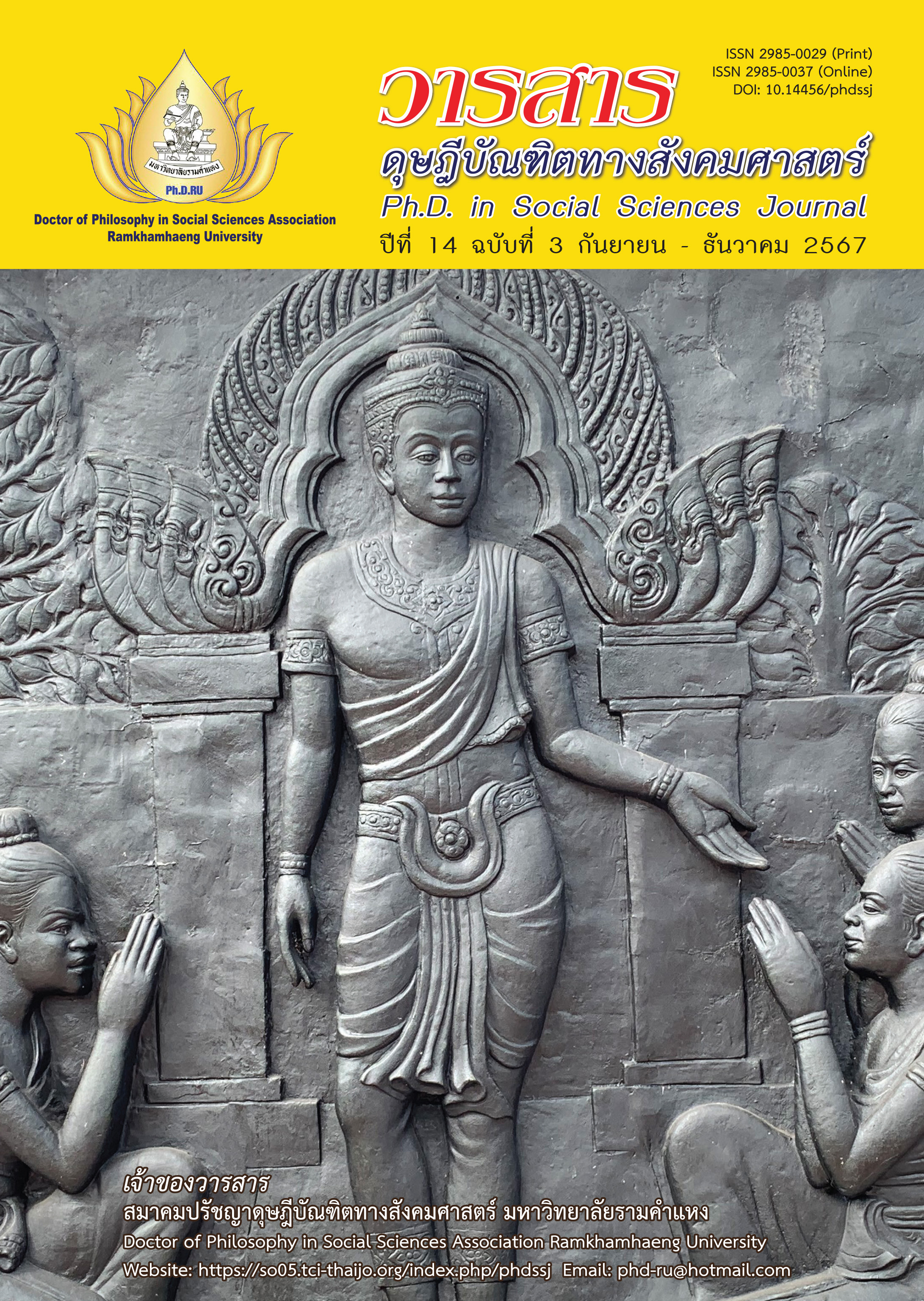The Development of the Concept of Metteyya in Thai Politics
Main Article Content
Abstract
This research article aims to study the concepts and the thinking development of Metteyya; investigates the history of using the concept of Metteyya in Thai politics; and analyzes the roles of the concept of Metteyya in Thai politics. This research is qualitative research and collecting data through documentary research. Data were analyzed using the technique of content analysis.
Findings are as follows: The concept of Metteyya has 9 sub-concepts. The concepts are divided into two groups. (1) The utopia’s society is the concept of an ideal society in the meaning of the social and the economic equality. These concepts are utopia; Bodhisattva; savior; emperor; and the meritorious. (2) The dystopia society is the concept of an extremely bad society. These concepts are the calamitous age, a great upheaval; the apocalypse; and millenniumism. This has led to the thinking development of Metteyya which is divided into five periods. (1) The occurrence: the inscription stones in the Dhavaravati and Sukhothai periods were found. (2) The dissemination: basic literary works were found i.e. Tribbumikatha in the Sukhothai period; Phra Malai Khamluang in the Ayutthaya period; and Triphumlokwinitchai Katha in the Rattanakosin period. (3) The application: literary works in honor of the kings were found and the Holy Man’s Rebellion used these works as political tools. (4) The transition: the concept of Metteyya changed into the concepts of socialism and communism. (5) False declaration: this was to reap benefits for oneself. These concepts resulted in historical events. First, the Holy Man’s Rebellion was the claim to be Metteyya or the Holy Man who was born to help people to avoid sufferings. Second, the economic project was created as a social and economic development plan with the concepts of land reform and the welfare state to foster an expectation that people would have a good living. The roles are played in creating political righteousness, hegemony; political socialization; and political desire. Such roles are used as political tools.
Article Details

This work is licensed under a Creative Commons Attribution-NonCommercial-NoDerivatives 4.0 International License.
Academic articles, research articles, and book reviews in the Ph.D. in Social Sciences Journal are author’s opinions, and not the publisher’s, and is not the responsibility of the Ph.D. in Social Sciences Journal Philosophy Association, Ramkhamhaeng University. (In the case that research is done on human, the researcher has to be trained in Ethics for Doing Research on Human Training and has to produce the evidence of the training).
References
Banomyong, P. (2009). Economic project outline of Luang Praditmanutham (Pridi Banomyong) (2nd ed.). Sukkhapabjai. [In Thai]
Buddharaksa, W. (2006). The Thaksin government’s attempts to build hegemony. Master’s Thesis of Arts (Government), Chulalongkorn University. [In Thai]
Chaiyaporn, C. (n.d.). Introduction to the study of political thought history, political philosophy, and political theory. Chulalongkorn University, Faculty of Political Science. [In Thai]
Dechaboot, S. (2012). Holy Men’s Rebellion: History of conflict between people and the state on the land of Siam. Gypzy. [In Thai]
Dhiravegin, L. (1985). The legitimacy and persistence of the system. Matichon, September 30, 1985, 22. [In Thai]
Eoseewong, N. (Ed.) (1999). Collection of people’s historical archives: Chronicle of the future Buddhas (B. Rawin, Copyeditor). Amarin Printing. [In Thai]
Nakata, T. (1976). The legitimacy of government: Thailand’s problems and hopes. Thammasat Journal, 5(2), 1-47. [In Thai]
Nambut, S. (2011). Instruct the political process of the National United front of Democracy Against Dictatorship: A case study of We Love Udon. Master’s Thesis of Political Science (Politics and Government), Sukhothai Thammathirat Open University. [In Thai]
Nartsupha, C., & Sapsarn, P. (1984). The ideology of the merit-based rebellion in Isaan. In P. Hantrakool & and A. Kamutpisamai (Eds.), The belief of Metteyya and the rebellion of meritorious people in Thai society (pp. 226-235). Sangsan. [In Thai]
National Library of Thailand. (1986). Inscriptions in Thailand, volume 2: Pallava script, Mon script, 12th-21st Buddhist centuries. Author. [In Thai]
Nimpanich, J. (1990). Political learning process and political attitudes of Thai people. In Social and culture basis of Thai politics (8th ed., unit 5). Sukhothai Thammathirat Open University Press. [In Thai]
Phiu-Nual, C. (1986). Political thoughts of Pridi Banomyong. Komol Keemthong Foundation. [In Thai]
Phra Thammapidok (P. A. Payutto). (1997). Buddhism in Asia. Thammasapa. [In Thai]


